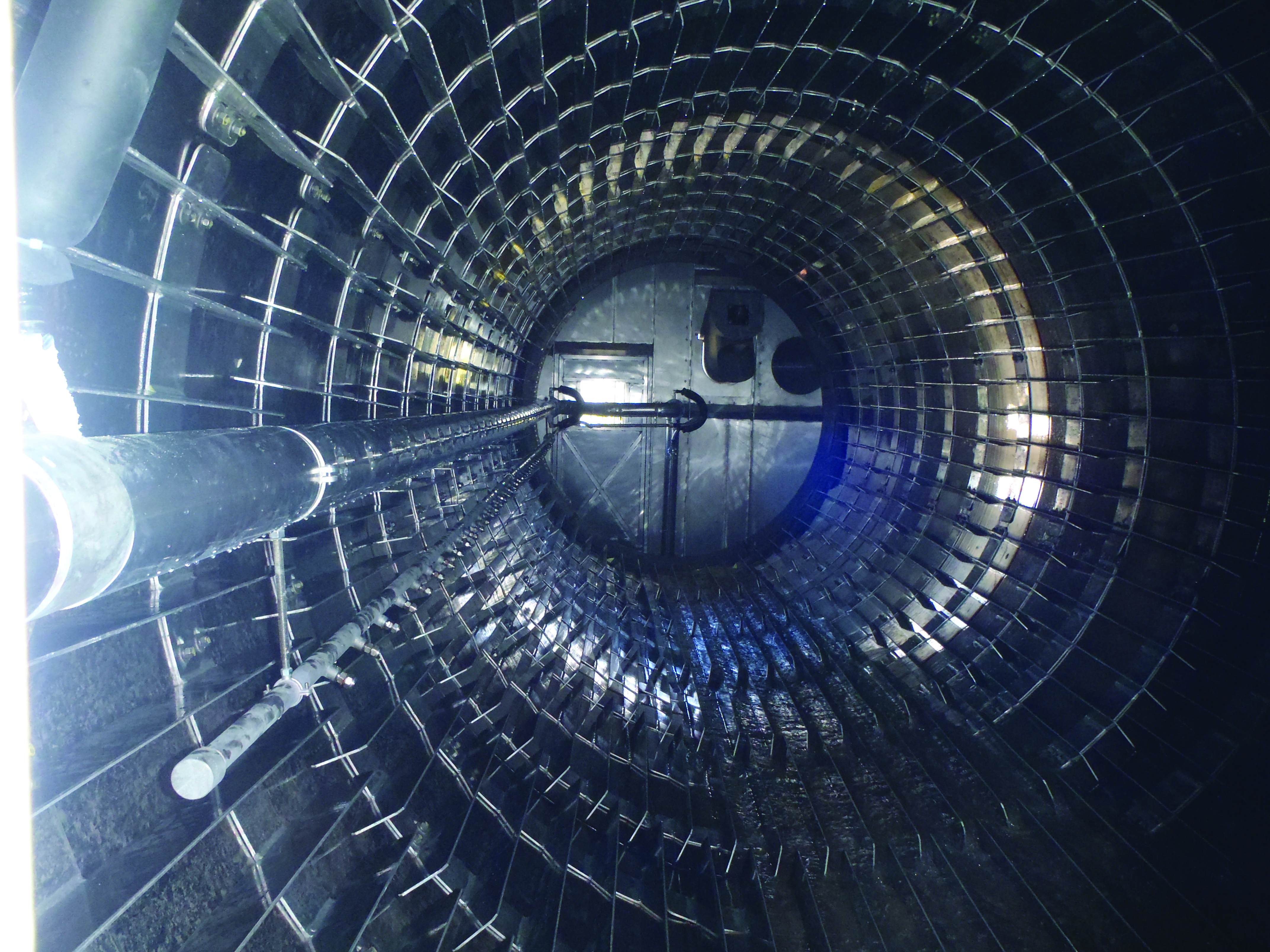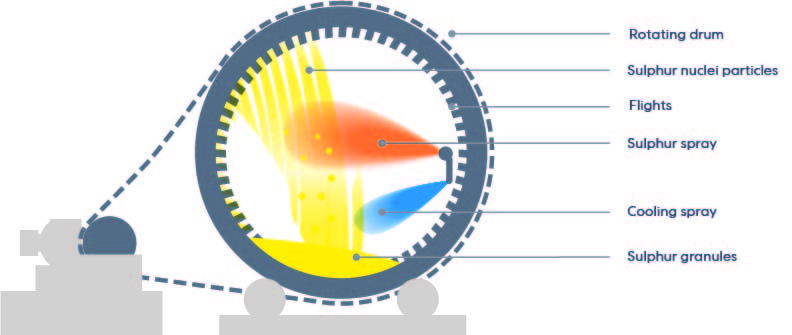
Drum granulation systems
IPCO sulphur drum granulators are the highest capacity units available and produce formed sulphur to SUDIC specifications, embodying the pinnacle of granulation technology.
ROTATING DRUM TECHNOLOGY FOR LOW COST, HIGH CAPACITY SULPHUR SOLIDIFICATION

Seed or nuclei particles of solid sulphur are generated externally by freezing sprays of liquid sulphur in a water bath at controlled pressures to form the desired size range for granulation. These particles are then augured into a slowly rotating drum with appropriately placed flights attached to its inner surface. The flights create curtains of particles inside the drum as well as gently moving them towards the discharge end.
As the nuclei particles travel along the drum, they are progressively enlarged to the required size for granulations by means of sulphur sprayed from a bank of nozzles running the length of the drum. The temperature in the drum is moderated by the evaporation of water from spray nozzles located inside the drum, ensuring ideal conditions for granulation.
LOW CAPEX AND OPEX FOR HIGH-CAPACITY SULPHUR FORMING
IPCO sulphur drum granulators are supplied prefabricated for fast delivery and rapid installation. Their simple design, low maintenance requirements, and continuous operation combine to deliver exceptional ROI:
- Highest capacity granulation unit available in the industry.
- Uniform end product – external seed generation enables controlled variation of size distribution during operation.
- Small footprint.
- Minimal rotating equipment.
- Fast delivery, quick installation, low shipping costs.
- No sulphur ‘pre-conditioning’ required.
- Continuous operation – no need for routine shut down.
- No solid waste streams or liquid effluents.
- Low maintenance – horizontal 0° drum reduces stress.
SUDIC quality product
The high-quality product meets the shape criteria and Stress Level I and II friability parameters of the SUDIC product specification.
The completely spherical shape – along with the repeated spraying and cooling of thin layers of molten sulphur on the surface of the granules as they pass through the granulator – accommodates the natural shrinkage of the product as it completes the transition from melt to solid, without weakening the product.
